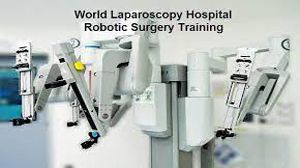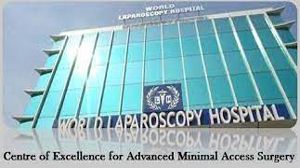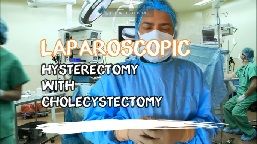Laparoscopy-Assisted Management of Grade IV Enteroatmospheric Fistulas
Add to
Share
43 views
Report
1 week ago
Description
Enteroatmospheric fistulas (EAFs) represent one of the most complex and life-threatening surgical challenges, often arising in patients with open abdomen after severe peritonitis, trauma, or multiple abdominal surgeries. Among them, Grade 4 EAFs are the most severe—characterized by large, high-output, mucosa-lined openings directly exposed to the atmosphere, with no surrounding soft-tissue coverage. These fistulas lead to profound nutritional depletion, sepsis, fluid imbalance, and significant morbidity. Managing such cases demands exceptional surgical expertise, advanced technology, and a multidisciplinary approach. At World Laparoscopy Hospital (WLH), under the visionary leadership of Dr. R. K. Mishra, laparoscopy-assisted techniques have redefined the management of complex EAFs. Through innovation, precision, and global surgical training excellence, WLH provides one of the few comprehensive, minimally invasive solutions for Grade 4 enteroatmospheric fistulas. Understanding Grade 4 Enteroatmospheric Fistulas Grade 4 EAFs are categorized by: High-output fistulous tract Exposed bowel mucosa protruding through an open abdominal cavity No granulation tissue or protective fascia Severe contamination and recurrent infections Difficult closure due to loss of abdominal domain These factors make definitive repair extremely complex and often impossible through conventional open or bedside methods. A staged, strategic approach is essential. Why Laparoscopy-Assisted Surgery is Transformative Traditional open repair for EAFs often results in: Excessive adhesiolysis High risk of bleeding and enterotomies Inadequate visualization Prolonged recovery Recurrent fistula formation WLH’s laparoscopy-assisted resection and anastomosis overcomes these challenges using the advantages of minimally invasive access: 1. Enhanced Visualization in a Hostile Abdomen High-definition laparoscopic optics allow surgeons to navigate dense adhesions, identify bowel loops precisely, and minimize accidental injuries. 2. Reduced Tissue Trauma Laparoscopic instruments enable delicate handling of fragile inflamed bowel, significantly lowering the risk of new fistulas. 3. Precise Fistula Isolation and Resection The metastatic approach allows meticulous dissection around the fistulous opening, ensuring complete removal of diseased bowel. 4. Safe, Tension-Free Anastomosis WLH uses advanced stapling and suturing techniques to create secure, leak-proof anastomoses even in compromised environments. 5. Better Outcomes and Faster Recovery Patients benefit from less postoperative pain, lower infection rates, and earlier return to nutrition. Surgical Philosophy at World Laparoscopy Hospital The management of Grade 4 EAFs at WLH follows a proven, evidence-based protocol: Step 1: Preoperative Optimization Aggressive sepsis control Nutritional rehabilitation (TPN or enteral feeding) Electrolyte stabilization Wound care with negative-pressure therapy This preparation converts a lethal situation into an operable one. Step 2: Laparoscopy-Assisted Approach The WLH surgical team performs the procedure through: Strategic port placement away from fistula and adhesions Gentle laparoscopic adhesiolysis under magnification Identification and mobilization of diseased bowel segment Exteriorization of the bowel through a mini-incision Open resection of fistula segment with healthy margins Construction of hand-sewn or stapled anastomosis Return of bowel to peritoneal cavity Abdominal wall closure or VAC therapy, depending on wound condition This hybrid technique provides the best of both worlds—precision of laparoscopy and control of open surgery. Step 3: Postoperative Recovery Care includes: Early nutritional support Strict infection surveillance Controlled abdominal wall closure strategies Minimizing recurrence through optimized wound care Patients treated at WLH often achieve faster normalization of gastrointestinal continuity and improved quality of life. Why World Laparoscopy Hospital Leads in Complex Abdominal Surgery WLH stands as a global center of excellence for advanced minimally invasive procedures due to: More than 25 years of laparoscopic innovation State-of-the-art surgical theatres and simulation technology A multidisciplinary team specializing in complex abdominal reconstruction Pioneering teaching and fellowship programs Thousands of successful advanced laparoscopic surgeries Dr. R. K. Mishra and his team have set international benchmarks for dealing with high-grade enteroatmospheric fistulas through laparoscopy-assisted interventions. Conclusion Grade 4 enteroatmospheric fistulas represent one of the most formidable challenges in gastrointestinal surgery. Through the sophisticated approach of laparoscopy-assisted resection and anastomosis, World Laparoscopy Hospital provides hope where conventional approaches often fail. WLH’s commitment to advanced minimally invasive care, precision surgery, and patient-centered recovery ensures unmatched outcomes for even the most complex abdominal pathologies. This revolutionary technique continues to transform survival, recovery, and global surgical standards—one patient at a time.
Similar Videos






